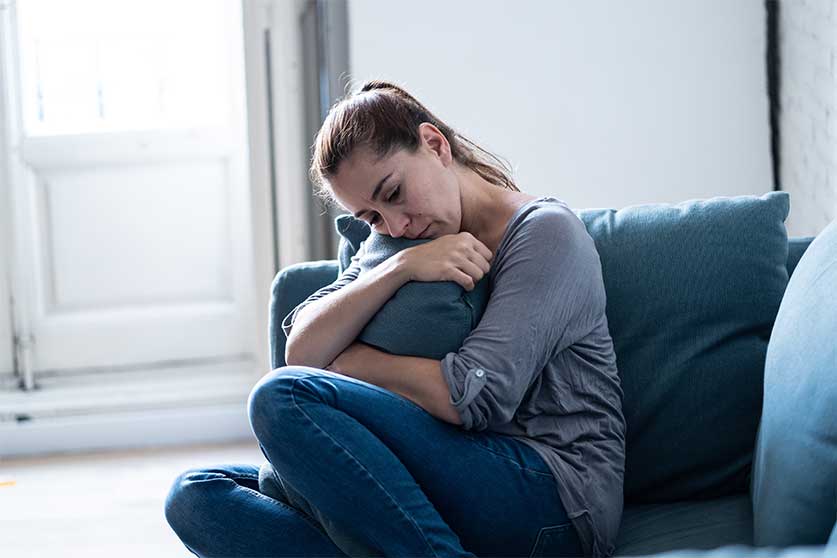Treatment For Schizoaffective Disorder At ORC

Medically Reviewed By: Manish Mishra, MBBS
Schizoaffective disorder is a serious mental health condition characterized by symptoms of a mood disorder as well as symptoms of schizophrenia. At Ohio Recovery Center, people with schizoaffective disorder can access treatment options proven to help achieve stability and maintain recovery.

Schizoaffective disorder is one of the most commonly misdiagnosed mental illnesses, often being mistaken for either bipolar disorder or schizophrenia, as it can encompass certain elements of both of these serious mental health conditions.
If you think you might be living with misdiagnosed or undiagnosed schizoaffective disorder, the psychiatric team at Ohio Recovery Center can provide the answers you need.
Our comprehensive residential treatment program provides 24/7 access to care from compassionate medical and clinical professionals and gives you the tools and resources you need to manage your symptoms, find balance, and live a healthy life.
Schizoaffective Disorder Treatment
As a primary mental health treatment provider, ORC provides the psychiatric assessments, treatment planning, monitoring, and treatment options necessary for lasting recovery from schizoaffective disorder and other mental health conditions.
Our scenic 55-acre campus offers an ideal setting for healing and recovery, with gender-specific cottages and an abundance of wellness and recreational activities. When not participating in formal treatment, you might consider taking part in cookouts, sports, hiking, movie nights, or group meditation, or simply relax in the gazebo by the pond.
Following an initial assessment shortly after your arrival, you will receive a detailed, individualized treatment plan, with immediate stabilization services provided if necessary. Your plan will also include evidence-based treatments for schizoaffective disorder such as cognitive behavioral therapy (CBT), pharmacotherapy options and medication management, family-involved therapy, and more.
Support groups and psychoeducation will help you learn coping skills, develop strong communication skills, and build social support. Our licensed case managers can help with issues such as those involving your job or other personal responsibilities and needs, and aftercare planning ensures that you have the resources and support you need once you leave us.
Medication
The atypical antipsychotic medication paliperidone (Invega) is currently the only medication specifically approved by the FDA for use in treating schizoaffective disorder.
However, a variety of other drugs, including the mood stabilizer lithium, clozapine (Clozaril), aripiprazole (Abilify), risperidone (Risperdal), olanzapine (Zyprexa), and a number of antidepressants, are also commonly used for the long-term treatment of this condition.
Psychotherapy
Specific therapies, including cognitive behavioral therapy, family therapy, and other individual or group-based forms of therapy, are effective treatment interventions that can greatly improve the quality of life for people experiencing schizoaffective symptoms.
Other Treatment Options
Additionally, holistic treatment for schizoaffective disorder may include life and social skills training, self-management strategies, and participation in peer support groups for those with psychotic disorders.
Electroconvulsive therapy may also be recommended in certain situations.
What Is Schizoaffective Disorder?
At one time, schizoaffective disorder was considered a subtype of schizophrenia, a condition with which it shares a variety of signs and symptoms.
However, it is now recognized as its own unique mental health condition characterized by a combination of symptoms of schizophrenia, such as hallucinations and/or delusions, and symptoms of a mood disorder, such as depression or manic episodes.
Without treatment, people with schizoaffective disorder will often have trouble functioning at work or in school and may struggle with their relationships, leading to isolation and a breakdown in their support system.
Subtypes Of Schizoaffective Disorder
Schizoaffective disorder generally presents in one of two distinct subtypes.
Subtypes of schizoaffective disorder are:
- bipolar type: characterized by periods of both mania and major depression
- depressive type: characterized by major depressive episodes only
Diagnosis
For a person to be diagnosed with schizoaffective disorder, they must meet specific criteria laid out in the Diagnostic and Statistical Manual of Mental Disorders, Fifth Edition (DSM-5), published by the American Psychiatric Association.
This criteria includes both persistent mood problems and psychotic symptoms, ruling out other potential disorders and underlying causes.
Diagnosis of schizoaffective disorder will likely include a physical exam as well as tests, screenings, and a psychiatric evaluation performed by a mental health professional.
Signs & Symptoms
Symptoms of schizoaffective disorder can vary by type and may also be noticeable to loved ones as signs of the disorder.
Schizoaffective disorder symptoms include:
- delusions
- hallucinations
- disorganized speech
- bizarre or unusual behavior or catatonia (inability to move)
- problems with pleasure and motivation
- symptoms of depression
- manic episodes
These symptoms are generally severe enough to impact a person’s self-care and daily life. Medical professionals can rule out if a substance use disorder or another mental health disorder or health issue is causing the symptoms.
Risk Factors
The primary cause of schizoaffective disorder is believed to be genetic or, potentially, environmental factors relating to brain structure.
Those who develop the disorder may have close family members who have also experienced schizoaffective disorder, schizophrenia, or bipolar disorder.
Using mind-altering drugs and experiencing stressful or traumatic events may also trigger the emergence of schizoaffective symptoms in people who are genetically predisposed.
Schizoaffective disorder is rare, estimated to occur in about .3% of the U.S. population, which translates to approximately 999,000 Americans and 35,400 Ohioans. It has a slightly higher incidence in women than men (particularly the depressive subtype).
Find Treatment For Schizoaffective Disorder At ORC
If you or your loved one is experiencing symptoms of schizoaffective disorder, we can help. Reach out to Ohio Recovery Center today to learn more.
- National Alliance on Mental Illness (NAMI) — Schizoaffective Disorder https://www.nami.org/About-Mental-Illness/Mental-Health-Conditions/Schizoaffective-Disorder
- National Library of Medicine: MedlinePlus — Paliperidone https://medlineplus.gov/druginfo/meds/a607005.html
- Substance Abuse and Mental Health Services Administration (SAMHSA) — Find Help and Treatment https://www.samhsa.gov/find-help

